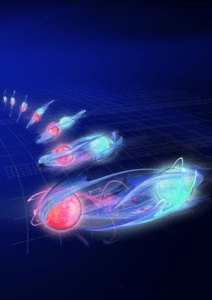Summary
To address questions in modern physics such as “what is the structure of matter inside neutron stars?” we need better computational methods to evaluate the interplay of fundamental forces between elementary particles. To-date the response to such questions rests on numerical computer simulations that are inherently limited. In this project, we develop new theoretical tools for quantum simulations of non-Abelian problems in high energy physics (HEP), and HEP problems beyond one dimension. Our work is conducted in close collaboration with experimental groups to design robust and feasible simulation schemes that are custom-designed to particular quantum platforms. We will integrate methods from machine learning and artificial intelligence to create a conceptually new framework for hybrid quantum-classical simulations. These novel tools are expected to find useful applications beyond HEP in material science and chemistry. Through collaborations with Creative Destruction Lab and the Vector Institute we plan to accelerate the path to industry deployment.
Related Content

Developing Tools for Quantum Characterization and Validation
Summary Coherence is essential for quantum computation; yet it introduces a unique sensitivity to any imperfections in hardware design, control systems, and the operating environment. Overcoming these sensitivities requires a hierarchy of strategies, ranging from optimization of the hardware architecture to software solutions including quantum error correction. Randomized Benchmarking Protocols are an important family of […]
October 3, 2017
Novel Superconducting Qubits for Error-Corrected Processors
Summary In this project, we develop novel superconducting qubits for error-corrected processors to enable large-scale quantum computing. Our design efforts will specifically target error-corrected architectures through a variety of paths. Possible features will include built-in parity measurements and the use of bosonic codes, such as Fock state and Cat codes, as our starting focus. Early […]
June 26, 2019

Quantum Dynamics of Cavity Interactions with Spin Ensembles
Summary High quality factor cavities can be powerful control elements for ensembles of spins, enabling unitary control as well as on demand cooling. They can also be used to couple two otherwise non-interacting ensembles. The goal of the project is to explore the physics and engineering of such systems both theoretically and experimentally. The laboratory contains a […]
September 7, 2016

Materials for Majorana-based Topological Qubits
Summary Topological qubits offer a novel pathway to scalable quantum computing by simultaneously allowing for ease of coupling between qubits and strong decoupling of qubits from noise and dissipation. The most promising direction explores the topologically induced protection of theoretically predicted exotic quasiparticles, the so-called Majorana Zero Modes or MZMs. To-date MZMs, which follow […]
January 28, 2019


